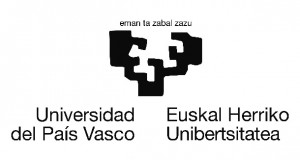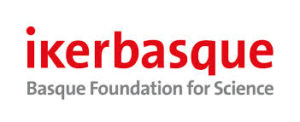Nanostructures of III-V (III: Ga, In; V: N, P, As) and II-VI (II: Zn, Cd; VI: S, Se, Te) semiconductor materials have attracted a great deal of interest due to their fascinating properties, which usually differ from their bulk counterparts. There are two main reasons responsibles for such a deviation. On the one hand, the confinement of electrons (and holes) in nanostructures gives rise to a size- and shape- dependent structure of electronic levels. On the one hand, the number of atoms forming the surface of a nanostructure is a significant fraction of the total. The unsaturated surface atoms tend to reorganize in order to minimize the surface energy, favouring certain crystalline phases and eventually leading to fancy atomic arrangements. Again, the stability of each polymorph depends on the size and the morphology of the nanostructure.
The smallest III-V and II-VI clusters have been predicted to adopt hollow spherical structures, related to carbon fullerenes. Symmetric and aesthetically pleasant, they have been exhaustively studied, both experimentally and theoretically. The hollow structure allows for the design of endohedrally doped compounds, with taylored semiconductor characteristics, and even more, with properties not present in the bare nanocluster (magnetism for example, when doped with transition metals). In this framework, we are interested on the characterization of new hollow and endohedrally doped nanoclusters of III-V and II-VI. The considered dopants are alkali metals and halogens, on one hand, and transition metals, on the other. Both impart a change in the bandgap that alters the semiconductor properties of the nanoclusters, and, in the particular case of transition metals, novel magnetic properties emerge.
Furthermore, these nanoclusters may be used as building blocks to assemble larger structures, such as dimers, polymers and solids. The geometries of the nanoclusters may be slightly altered upon the aggregation, but keeping their own structure, resembling the case of fullerites. Transition metal doped nanoclusters can form ferromagnetic and antiferromagnetic materials depending on the spin coupling, with potential application in spintronics. Alkali and halogen doped materials, on the other hand, present a bandgap decrease as compared to bare materials, and its ionic nature enhances the conductivity, which leads to the optimization of their semiconducting properties. Standard methods of Computational Chemistry based on Density Functional Theory are used to characterize the structures of bare, doped and assembled nanoclusters, and ab initio Quantum Dynamic simulations are carried out to further predict the thermal stability of the nanoclusters characterized.
Recent publications on the field:
- Elisa Jimenez-Izal, Jon M. Matxain, Mario Piris, Jesus M. Ugalde, “Self-assembling endohedrally doped CdS nanoclusters: new porous solid phases of CdS“, Physical Chemistry Chemical Physics, vol.14, iss.27, p.9676-[], (2012) . DOI: 10.1039/C2CP41273J
- Elisa Jimenez-Izal, Jon M. Matxain, Mario Piris, Jesus M. Ugalde, “Thermal Stability of Endohedral First-Row Transition-Metal TM@Zn“, The Journal of Physical Chemistry C, vol.115, iss.16, p.7829-7835, (2011) . DOI: 10.1021/jp108640w
- Elisa Jimenez-Izal, Jon M. Matxain, Mario Piris, Jesus M. Ugalde, “Structure and Stability of the Endohedrally Doped (X@Cd“, The Journal of Physical Chemistry C, vol.114, iss.6, p.2476-2483, (2010) . DOI: 10.1021/jp909357c
- Jon M. Matxain, Mario Piris, Xabier Lopez, Jesus M. Ugalde, “Thermally Stable Solids Based on Endohedrally Doped ZnS Clusters”, Chemistry – A European Journal, vol.15, p.5138 (2009). DOI: 10.1002/chem.200802472
- Jon M. Matxain, Elena Formoso, Jose M. Mercero, Mario Piris, Xabier Lopez, Jesus M. Ugalde, “Magnetic Endohedral Transition-Metal-Doped Semiconduncting-Nanoclusters“, Chemistry – A European Journal, vol.14, iss.28, p.8547-8554, (2008) . DOI: 10.1002/chem.20080037
- Jon M. Matxain, Mario Piris, Elena Formoso, Jose M. Mercero, Xabier Lopez, Jesus M. Ugalde, “Endohedral Stannaspherenes Mn@Sn12 and its Dimer: Ferromagnetic or Antiferromagnetic?” ChemPhysChem, vol 8, p.2096 (2007) DOI: 10.1002/cphc.200700428
- J.M. Matxain, L.A. Eriksson, E. Formoso, M. Piris, J.M. Ugalde, “Endohedral (X@ZniSi)i=4-160, Nanoclusters, X = Li, Na, K, Cl, Br“, Journal of Physical Chemistry C, vol.111, iss.9, p.3560-3565, (2007) . DOI: 10.1021/jp0668697
- J.M. Matxain, L.A. Eriksson, J.M. Mercero, X. Lopez, M. Piris, J.M. Ugalde, J. Poater, E. Matito, M. Sola, “New Solids Based on B12N12 Fullerenes“, Journal of Physical Chemistry C, vol.111, iss.36, p.13354-13360, (2007) . DOI: 10.1021/jp073773j
- Jon M Matxain, Leif A Eriksson, Jose M Mercero, Jesus M Ugalde, Eleonora Spano, Said Hamad, C Richard A Catlow, “Electronic excitation energies of Zn“, Nanotechnology, vol.17, iss.16, p.4100-4105, (2006) . DOI: 10.1088/0957-4484/17/16/018
- Said Hamad, C. Richard A. Catlow, Eleonora Span, Jon M. Matxain, Jesus M. Ugalde, “Structure and Properties of ZnS Nanoclusters“, The Journal of Physical Chemistry B, vol.109, iss.7, p.2703-2709, (2005) . DOI: 10.1021/jp0465940
- Jon M. Matxain, Jose M. Mercero, Joseph E. Fowler, Jesus M. Ugalde, “Clusters of II-VI Materials: CdiXi, X: S, Se, Te, i < 16.“, Journal of Physical Chemistry A, vol.108, iss.47, p. 10502–10508 (2004) DOI: 10.1021/jp037195s
- Jon M. Matxain, Jose M. Mercero, Joseph E. Fowler, Jesus M. Ugalde, “Electronic Excitation Energies of ZniOi Clusters“, Journal of the American Chemical Society, vol.125, iss.31, p.9494-9499, (2003) . DOI: 10.1021/ja0264504
- Jon M. Matxain, Jesus M. Ugalde, M. D. Towler, R. J. Needs, “Stability and Aromaticity of BiNi Rings and Fullerenes“, The Journal of Physical Chemistry A, vol.107, iss.46, p.10004-10010, (2003) . DOI: 10.1021/jp036296n
- Jon M. Matxain, Jose M. Mercero, Joseph E. Fowler, Jesus M. Ugalde, “Clusters of Group II-VI Materials: CdiOi, i< 16“, The Journal of Physical Chemistry A, vol.107, iss.46, p.9918-9923, (2003) . DOI: 10.1021/jp035226d
- Jon M. Matxain, Jose M. Mercero, Joseph E. Fowler, Jesus M. Ugalde, “Small clusters of group-(II-VI) materials: ZniXi, X=Se,Te, i=1-9“, Physical Review A, vol.64, iss.5, p.053201, (2001) . DOI: 10.1103/PhysRevA.64.053201
- Jon M. Matxain, Arantxa Irigoras, Joseph Fowler, Jesus Ugalde, “Electronic excitation energies of small ZniSi clusters“, Physical Review A, vol.63, iss.1, p.013202, (2000) . DOI: 10.1103/PhysRevA.63.013202
- Jon M. Matxain, Joseph Fowler, Jesus Ugalde, “Small clusters of II-VI materials: ZniOi, i=1-9“, Physical Review A, vol.62, iss.5, p.053201, (2000) . DOI: 10.1103/PhysRevA.62.053201
- Jon M. Matxain, Joseph Fowler, Jesus Ugalde, “Small clusters of II-VI materials: ZniSi, i=1-9“, Physical Review A, vol.61, iss.5, p.053201, (2000) . DOI: 10.1103/PhysRevA.61.053201




